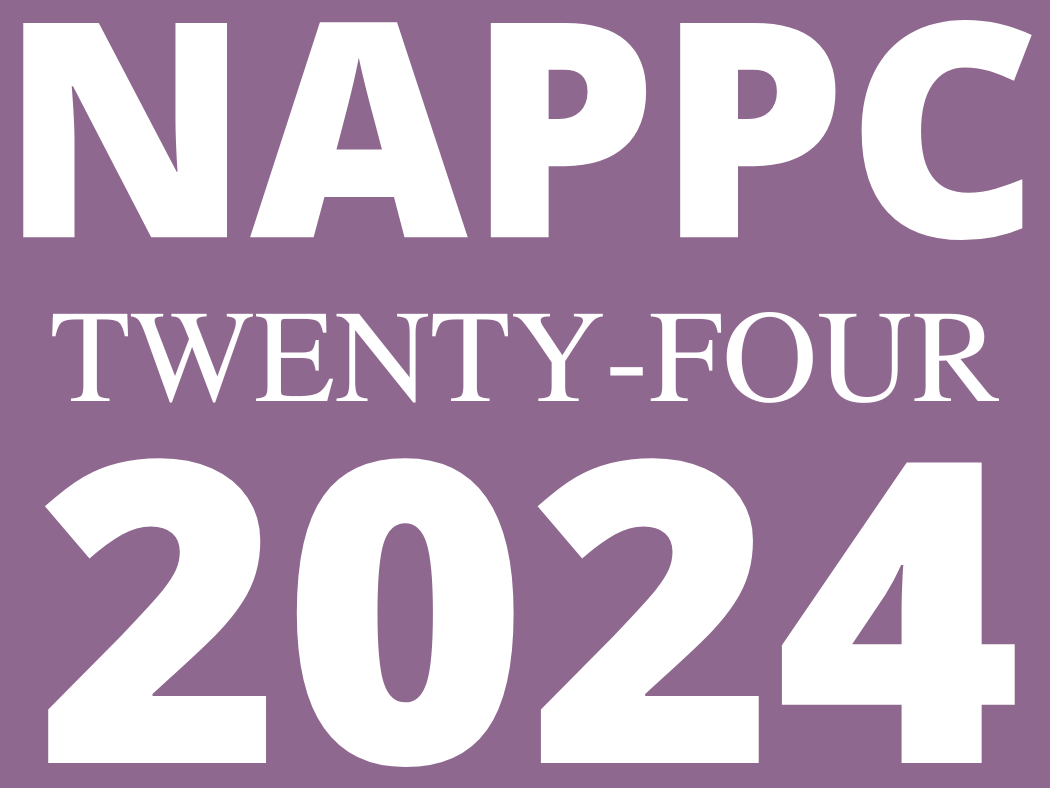2024 NAPPC Conference Recap
This year's North American Pollinator Protection Campaign (NAPPC) Conference, hosted by the National Museum of the American Indian in Washington, DC was another benchmark for the Campaign's mission to create and advance solutions for pollinator conservation across the continent. This year's conference sought to feature and amplify the necessity of centering Indigenous communities and knowledge in the work that NAPPC does, which was achieved through a diverse set of keynote speakers, successful Task Force Breakout Sessions, and a panel on challenges and solutions to common issues found in restoration efforts. The NAPPC conference brought partners of all backgrounds together, working to find common ground on initiatives that benefit pollinators.
Keynote Speaker Presentations
Reed Robinson: Welcoming Remarks
Jane Breckinridge: Tribal Alliance for Pollinators and the Euchee Butterfly Farm: Centering Indigenous Communities and Knowledge in Pollinator Conservation Efforts
Dr. Silvana Martén-Rodríguez: Untangling the Complexity of Climate Change Effects on Plant Reproductive Traits and Pollinators: A Global Synthesis
Dr. Kristen Baum: The Status of Monarchs: Challenges and Opportunities
Dr. Dan Sonke: Opportunities and Challenges for Bee Friendly Farming at Blue Diamond Growers
Dr. Scott Miller: Possible Modalities of a Global Pollinator Platform
Task Forces
Going forward, the 10 active NAPPC Task Forces will continue to meet and work throughout the year on projects to help improve pollinator health throughout North America. To see a list of the Task Forces and the projects they are working on, click on the button below.
Task Forces2024 NAPPC Award Winners
On October 22, 2024 this year’s award winners from the United States, Canada, and Mexico were honored by Pollinator Partnership and the North American Pollinator Protection Campaign (NAPPC) during the NAPPC Conference Award Ceremony hosted at National Museum of the American Indian in Washington DC. The NAPPC Community is proud to honor these exceptional businesses, individuals, and initiatives that have found creative and inspirational methods of advancing pollinator conservation in their own capacities.
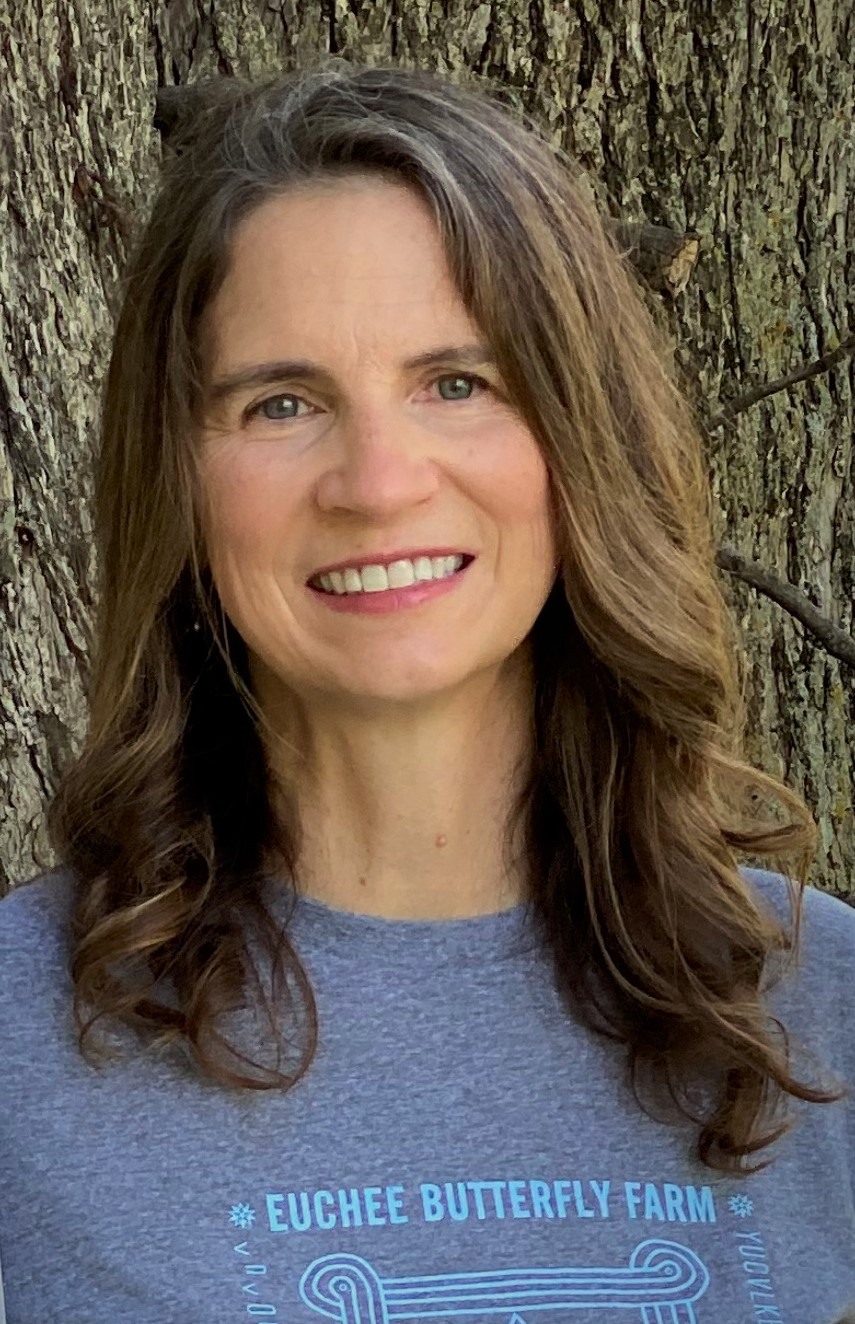
Jane Breckinridge
2024 NAPPC POLLINATOR ADVOCATE AWARD – United States
Jane Breckinridge, is a citizen of the Muscogee Creek Nation, Co-Director of the Tribal Alliance for Pollinators and Director of the Euchee Butterfly Farm in Tulsa County, OK. A new nonprofit, the Tribal Alliance for Pollinators (TAP) provides training and technical support for tribes throughout North America that want to conserve and restore grassland ecosystems in order to help threatened pollinators (like the monarch butterfly) and to preserve native plants that serve as the foundation for Indigenous cultural, medicinal, and culinary traditions. TAP was born out of the grassroots support generated by the Tribal Environmental Action for Monarchs (TEAM), a coalition of seven tribal partners – Chickasaw, Seminole, Citizen Potawatomi, Muscogee Creek, Osage, Eastern Shawnee, and Miami Nations – who are restoring monarch habitat on their lands with the assistance of Monarch Watch and the Jane’s own Euchee Butterfly farm. Together, the TEAM coalition has restored over 50,000 milkweeds and 30,000 native wildflowers to date on 350 acres of habitat.
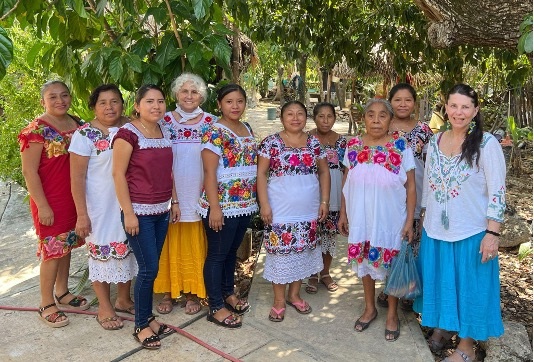
Mayan Melipona Bee Sanctuary Project
2024 POLLINATOR ADVOCATE AWARD- Mexico
Led by Rebecca Robertson, the Mayan Melipona Bee Sanctuary Project is a multifaceted initiative dedicated to empowering women, protecting and increasing the native endangered Mayan Melipona Honeybee, and preserving ancient Mayan culture. Located in Valladolid, in the heart of the Yucatán Peninsula, the Mayan Melipona Bee Sanctuary Project is committed to cultural preservation, gender equality, and ecological sustainability in the Yucatán Peninsula and beyond. Namely, the initiative seeks to achieve the protection and continuation of the more than 3200-year-old tradition of Mayan Melipona bee tending. Through this project, Rebecca and her team provide women with the necessary resources, knowledge, and support to start their own bee apiaries. In just a few short years, the Project has built a Central Bee Sanctuary in Valladolid, Mexico that is housing 50 hives of the native Stingless Melipona honeybee and additionally built seven bee yards in the surrounding Maya communities. The Project has trained approximately 100 Maya people in beekeeping practices that are lost in many villages and in doing so, they hope to create a pollination corridor for these bees, who are the crucial pollinators of their native ecosystems.
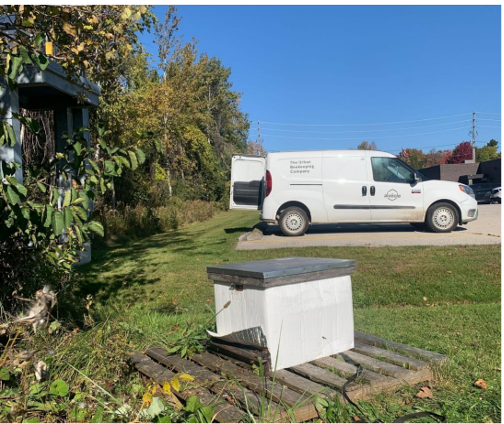
LANXESS Canada Co./Cie.
2024 POLLINATOR ADVOCATE AWARD - Canada
For over 60 years, the Lanxess West Hill Manufacturing facility has been operating in Toronto. The plant operates 24/7/365, employs over 100 employees and maintenance contractors, and produces lubricant additives and greases for specialty industrial and transportation applications. The site where the facility sits encompasses 24 acres of forest with urban wildlife, and the team at Lanxess has embraced the surrounding ecosystem and have become highly engaged in habitat restoration, involved with local environmental activities and causes, and implemented a community outreach and education program. The facility’s employees are awarded paid time off to participate in efforts like repatriating 1,500 square feet of lawn and converting it to a pollinator garden complete with native wildflowers, trees, and shrubs. The team at Lanxess have worked with local partners to install and maintain honeybee hives on site, and have gone beyond passively supporting these hives by implementing biomonitoring systems, reducing or in some cases eliminating mowing regimes, consulting with local biodiversity experts, and installing native bee and bird houses. These activities have inspired other Lanxess plants around the world to adopt similar practices, and have provided an example for how manufacturing facilities can achieve successful pollinator advocacy.
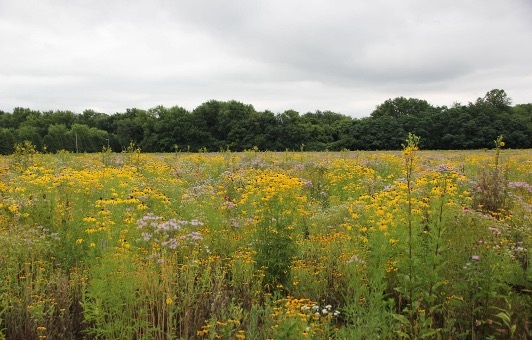
Baugh Farms
2024 FARMER AND RANCHER AWARD - United States
John and Barbara Baugh own and operate Baugh Farms, a corn and soybean operation in Tippecanoe County, Indiana. In 2017, John sought assistance from local NRCS/FSA representatives and the nearby soil and water conservation district regarding various erosion issues that were increasingly apparent in their row crop fields. After learning more about the various options they had to address the issue and motivated by a passion for pollinators and other wildlife, Barbara and John decided to convert the entire field of 99 acres to native prairie. Since then, the site has been utilized by the Tippecanoe County Soil and Water Conservation District as a stop on their wildlife habitat driving tour, which has allowed the public to learn more about local options for creating working habitat on private lands. Researchers from Purdue University have used Baugh Farms to conduct studies in to native pollinator populations and site prep methods, and the farm served as the example site for the Indiana Native Plant Society’s presentation entitled “Using Native Plants in a Modern Farming Operation”. Through their embrace of pollinator conservation and sustainable agricultural practices, John and Barbara are demonstrating the important linkage between working lands and functional habitats for pollinators and other wildlife.
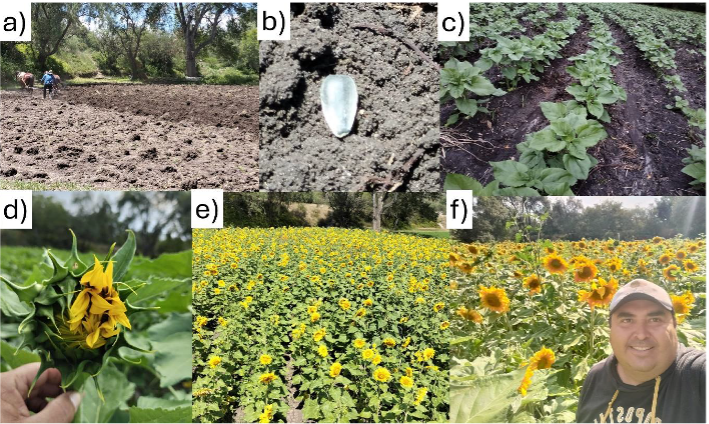
Ciro Arturo Reyes Moreno
2024 FARMER AND RANCHER AWARD - Mexico
Ciro Arturo Reyes Moreno is general manager of Rancho Los Álamos located in the municipality of Tula de Allende in the State of Hidalgo, Mexico. Rancho Los Álamos is an ecotourism project focused on the conservation and sustainable use of local flora and fauna. Much of its surface has been allocated for the conservation of pollinators through the planting of 90,000 sunflowers each year on 5,000 square meters, which, together with surrounding alfalfa fields, have contributed floral resources and shelter to fireflies and various types of pollinators such as bees, hummingbirds, bats, and other wildlife. By family custom, corn, pumpkin, beans, chili, and alfalfa are planted in these lands, and sheep, cattle and pigs are kept there as well. Currently, these activities are accompanied by various ecotourism services offered so that visitors can get a glimpse of how biodiversity can be supported alongside a thriving agricultural operation.
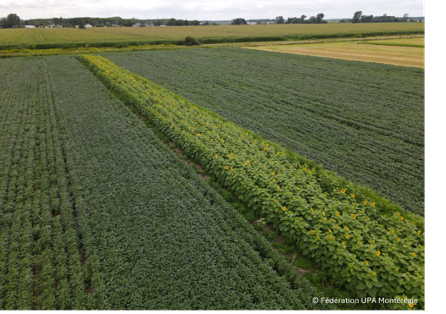
Céréales Bellevue Inc.
2024 FARMER AND RANCHER AWARD - Canada
Paul Caplette, and his brother Pierre own Céréales Bellevue Inc., a field crop operation in St. Robert, Quebec, roughly one hour north-east of Montreal. Having grown up on the farm, the two brothers know every detail and inch of the surrounding landscape, prompting a shared passion for the land itself and the surrounding ecosystems and wildlife. Céréales Bellevue Inc. has planted 1,200 trees and 5,000 fruit bushes to provide habitat and sustenance to native fauna and pollinators, and they cover 90% of their soil before each winter to better nourish and protect soil microorganisms. By widening their riparian buffer strips to more than 10 meters, whereas Quebec regulations require only 3 meters, Paul Caplette has created buffer zones and additional pollinator plantings between rows and along the waterways, and by the same token, have created refuge zones for biodiversity. These practices have helped Céréales Bellevue reduce GHG emissions by 33% and pesticide use by over 30% since 2006. Their unique system of dynamic, diversified cultivation enables them to have a high-yield rotational farming operation that prioritizes the health of pollinators and other surrounding wildlife.
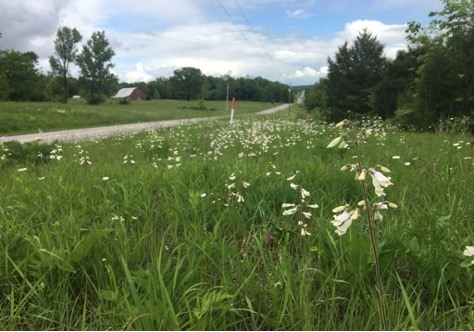
Kentucky Transportation Cabinet
2024 NAPPC ROADSIDE MANAGEMENT AWARD
Lead by the Kentucky Transportation Cabinet (KYTC) in partnership with Federal Highways Administration (FHWA), and United States Fish and Wildlife Service – Kentucky Field Office (USFWS-KFO), the 2019 KYTC Pollinator Conservation Strategy has been a shining example of the opportunities for pollinator conservation that exist along our federal and state ROWs. At this point in time, over 100 acres of pollinator habitat has been created so far within KYTC right-of-ways. With over 27,500 miles of roadway and 23 rest areas across Kentucky, it is KYTC's intent to utilize ROWs for pollinator habitat wherever possible within these areas. Species are selected mainly by their historical native presence in Kentucky and by site quality. In these pollinator plots, native species to Kentucky have been given preference, particularly milkweed given its importance to the eastern migratory monarch population. Public outreach has been a key priority for the KYTC, with regular signage along Kentucky’s ROWs pointing out habitat plantings to travelers, and through the use of social media, which has marked the KYTC’s shift in policy and increased the attention to the functionality of these new pollinator habitat plots. Of course, there are also the benefits to drivers through the beautification of Kentucky highways. With the creation of more pollinator habitat, KYTC is contributing to the stabilization of our pollinator populations.

Tennessee Valley Authority
2024 NAPPC ELECTRIC POWER AWARD
Led and administered by the Tennessee Valley Authority (TVA), the Douglas Dam Reservation Pollinator Project began in 2016 with the aim of a broadscale restoration of the grassland plant community at the project’s site on the French Broad River in East Tennessee. The project has followed a phased approach that varies across sections and is based on historic use, proximity to TVA’s assets, and the availability of existing seed banks for plant sourcing. At this point in time, about 60% of the total project area has been restored with native wildflowers and grasses and has officially reached the “maintenance stage”, wherein prescribed fire and Integrated Vegetation Management will be utilized. Given the successes of the Douglas Dam’s restoration project, TVA has become an active participant in the Southeast Bumble Bee Atlas regional project and the site has been utilized by University of Tennessee masters students for their theses and five peer-reviewed publications. Direct outreach about the project and the intended maintenance methods has been conducted, along with the publication of an annual TVA Stewardship Book in which the Douglas Dam site is regularly featured. TVA has embraced the influence of NAPPC and the growing awareness of pollinators amongst the general public, as the Douglas Dam site was featured during Pollinator Week outreach events in collaboration with several University of Tennessee campuses and their Pollinator Week activities.

